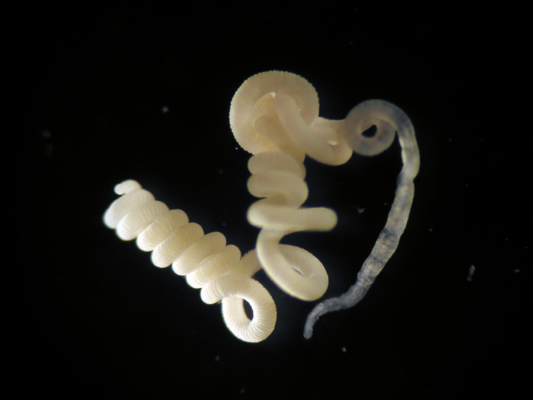| Description | ||
Symbioses between bacteria and eukaryotes are ubiquitous, yet our understanding of the interactions driving these associations is hampered by our inability to cultivate most host-associated microbes. Here we use a metagenomic approach to describe four co-occurring symbionts from the marine oligochaete Olavius algarvensis, a worm lacking a mouth, gut and nephridia. Shotgun sequencing and metabolic pathway reconstruction revealed that the symbionts are sulphur-oxidizing and sulphate-reducing bacteria, all of which are capable of carbon fixation, thus providing the host with multiple sources of nutrition. Molecular evidence for the uptake and recycling of worm waste products by the symbionts suggests how the worm could eliminate its excretory system, an adaptation unique among annelid worms. We propose a model that describes how the versatile metabolism within this symbiotic consortium provides the host with an optimal energy supply as it shuttles between the upper oxic and lower anoxic coastal sediments that it inhabits. Publication
|
||
| Projects | ||
| 1. Olavius algarvensis endosymbiont metagenome Delta1 | ||
| 2. Olavius algarvensis endosymbiont metagenome Delta4 | ||
| 3. Olavius algarvensis endosymbiont metagenome Gamma1 | ||
| 4. Olavius algarvensis endosymbiont metagenome Gamma3 | ||
|
||
Olavius algarvensis endosymbiont metagenome

